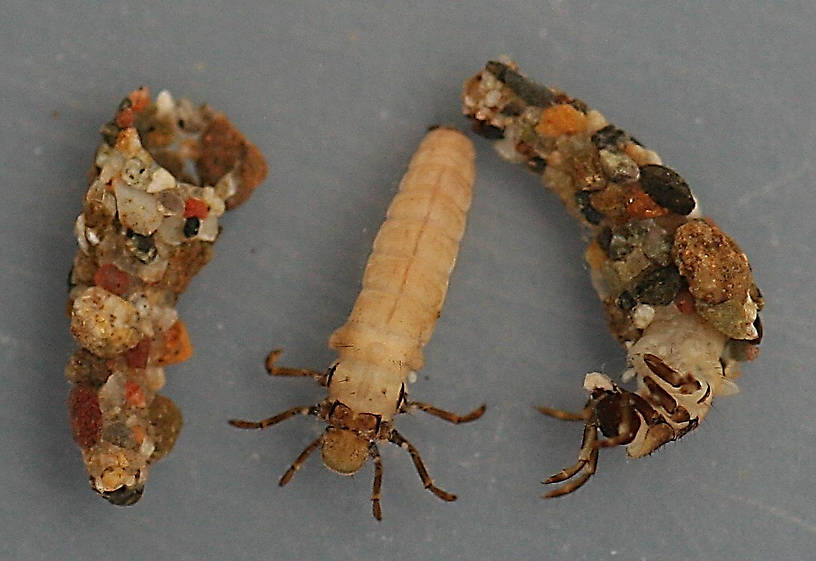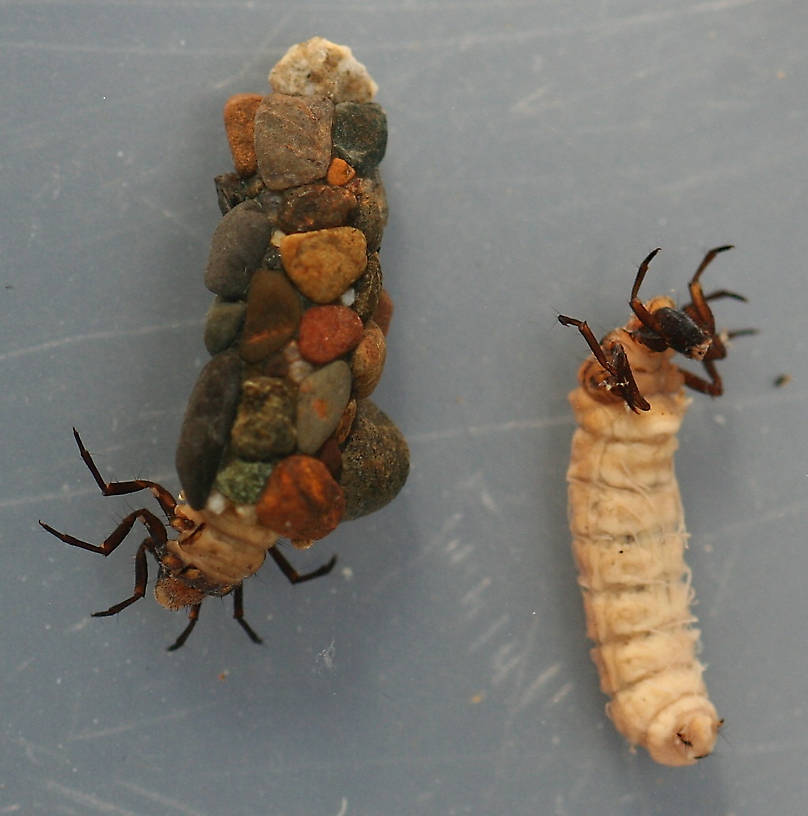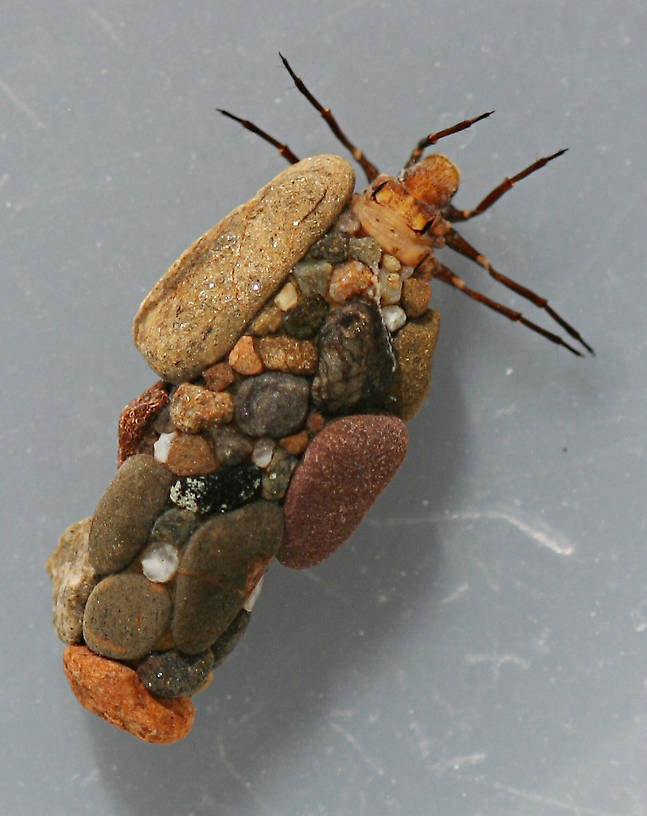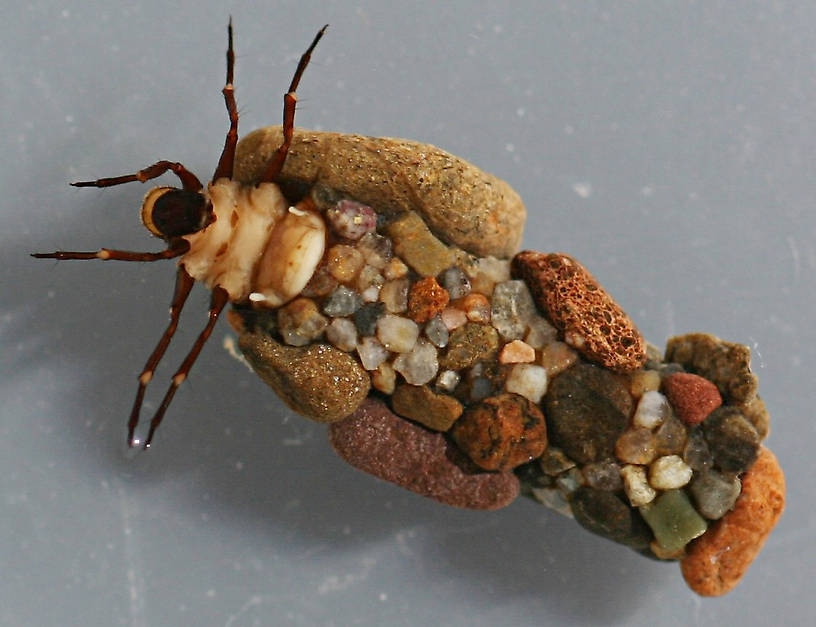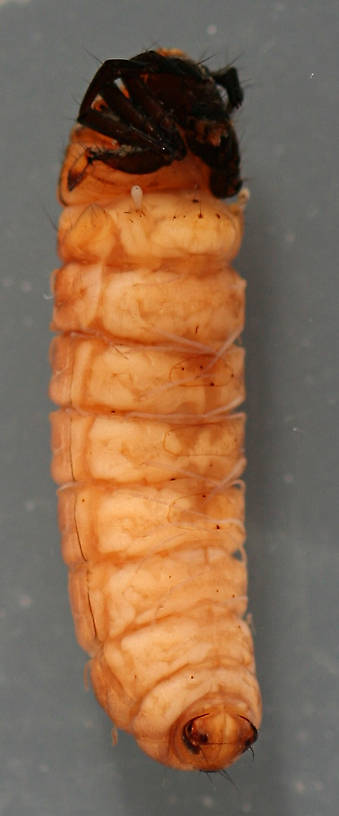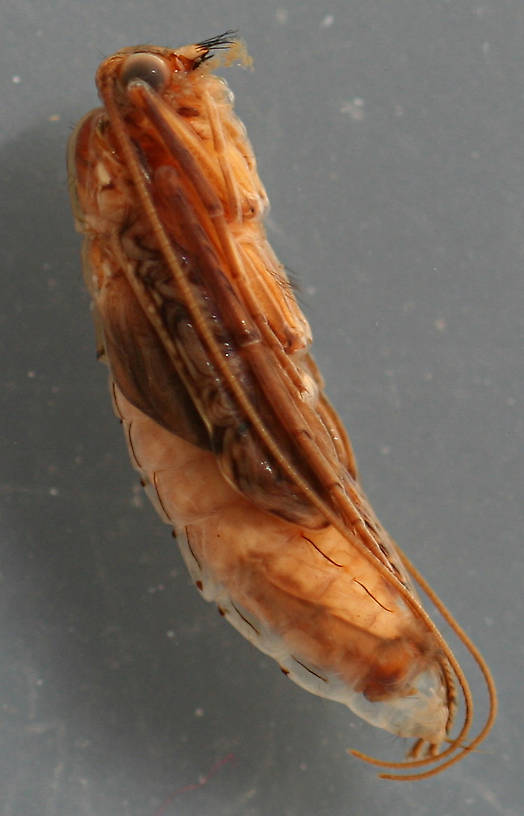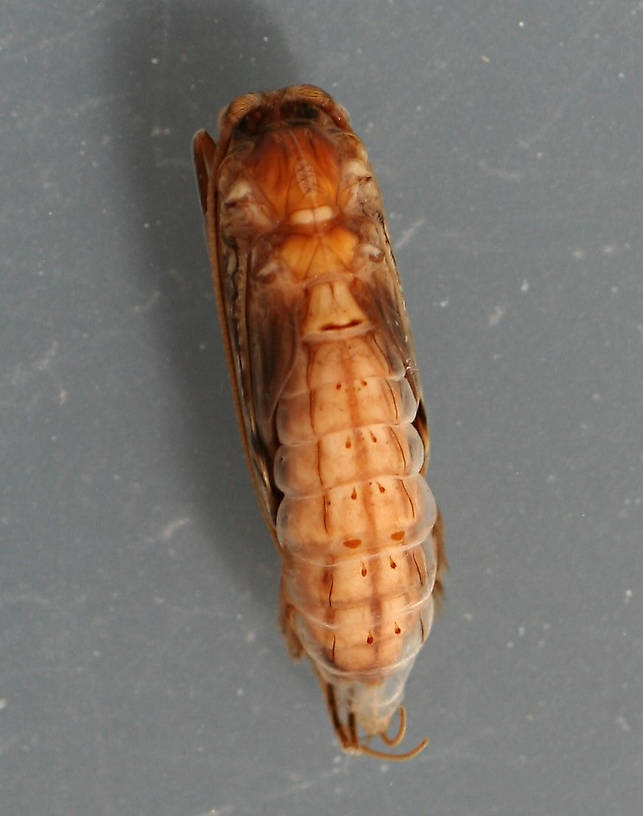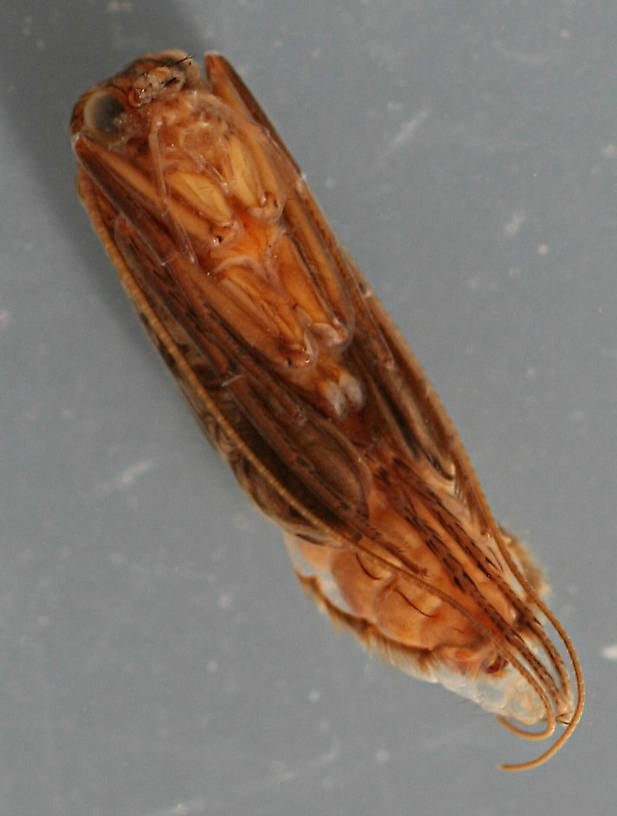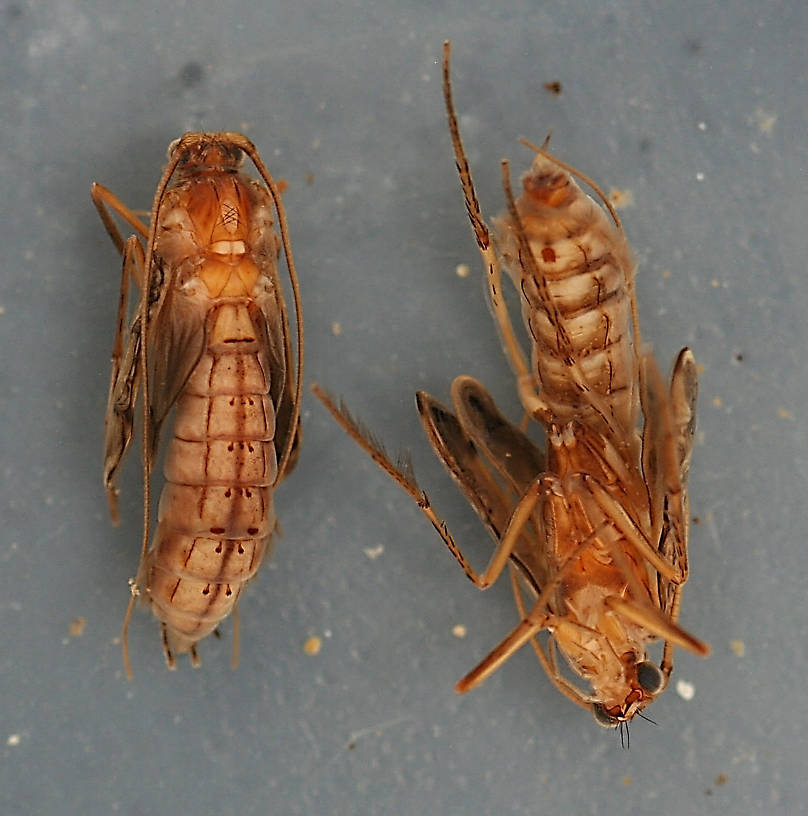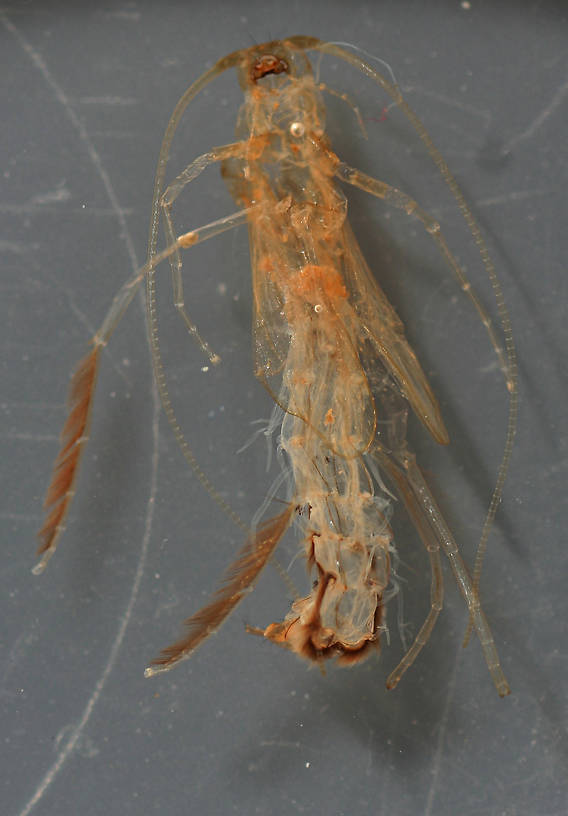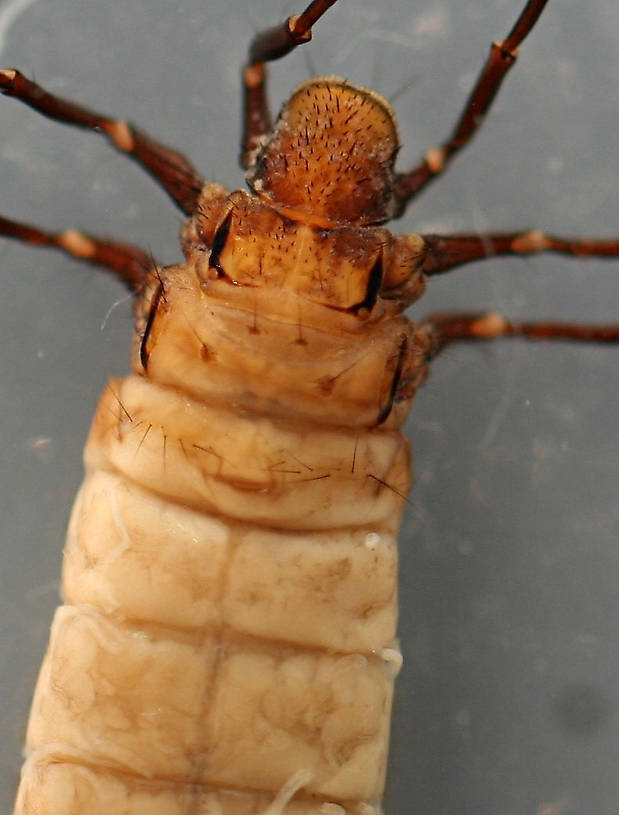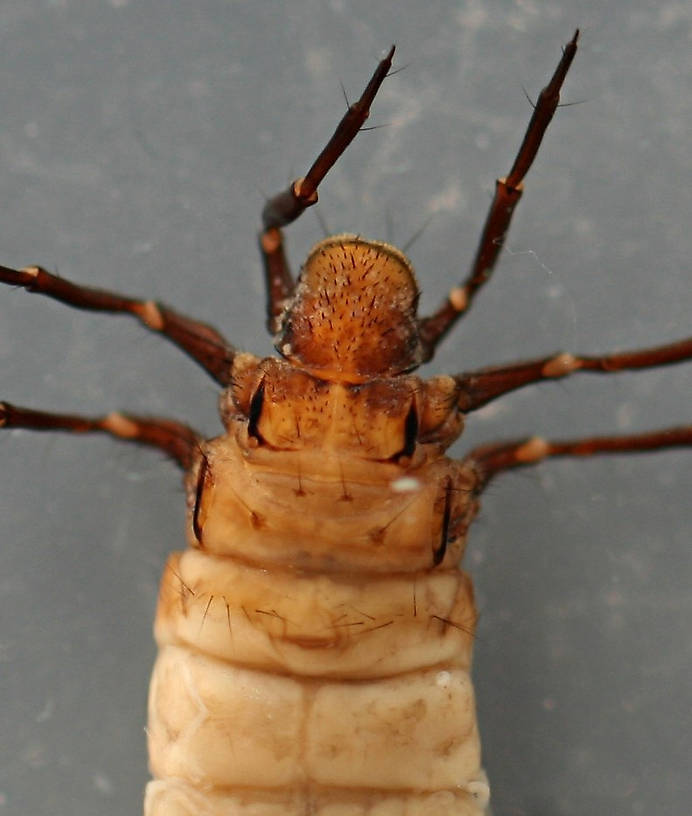Blog & Latest Updates
Fly Fishing Articles
Insects by Common Name


> > Neophylax larvae and pupae
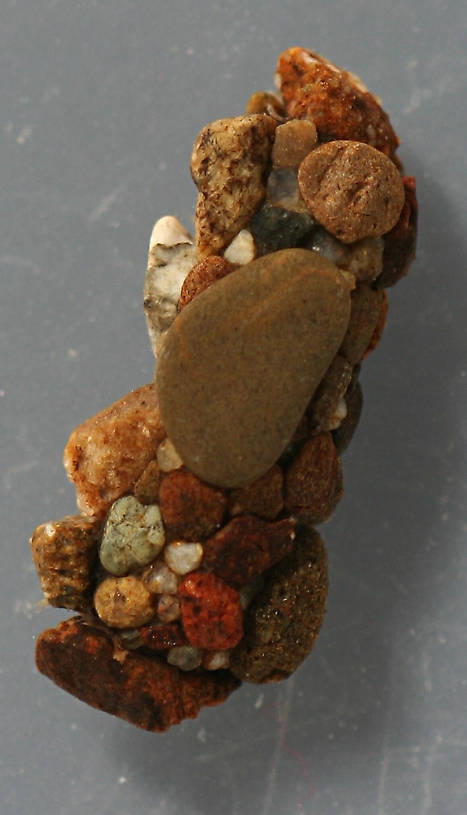
Prepupal, pupal case. 12 mm. Dorsal view. Collected September 14, 2007.
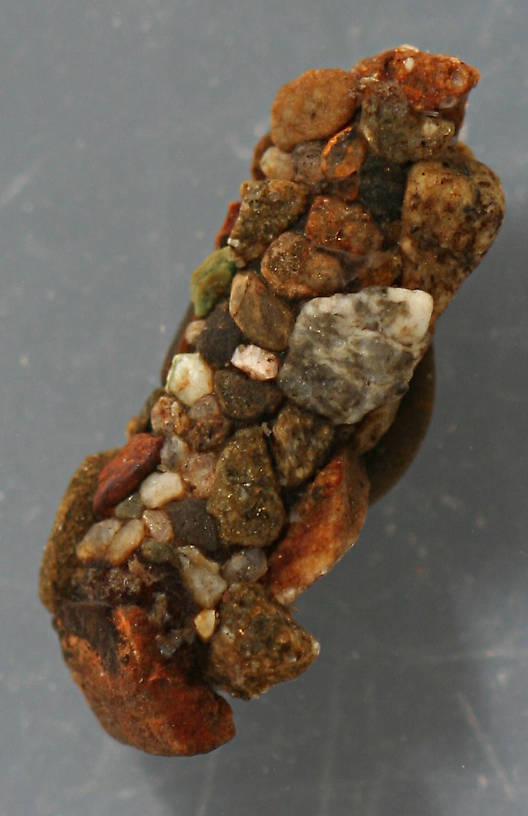
Prepupal, pupal case. 12 mm. Ventral view. Collected September 14, 2007.
| Millcreek | November 25th, 2014, 8:54 pm | |
| Healdsburg, CA Posts: 356 | I haven't found these in the mainstem of the Russian River but they're abundant in a small tributary of the Russian, Mill Creek. The larvae are usually found in areas of slow water with healthy growths of diatoms on the substrate. Larvae are common from mid-spring through mid to late summer, depending on water temperatures. The larvae can often be seen above the waterline on rocks, presumably grazing on dried diatoms. They're seldom more than a few inches above the waterline but can spend half an hour or more out of the water. Prepupae and pupae can be found in medium to large aggregations on cobble from early summer to the first floods. When the larvae construct their pupal cases they enter a state of diapause as prepupae for several weeks to several months. There are at least three species of Neophylax in California, Neophylax occidentis, N. rickeri and N. splendens. Wiggins (1996) described the larvae of N. rickeri but I've been unable to find descriptions of the other two species. | |
| Creno | November 25th, 2014, 9:15 pm | |
| Grants Pass, OR Posts: 305 | try this - Vineyard, R.N., Wiggins, G.B., Frania, H.E., Schefter, P.W. 2005. The caddisfly genus Neophylax (Trichoptera: Uenoidae). Royal Ontario Museum, Contributions in Science 2: 1-141. If you can get a good closeup image of the pro/mesonotum like in your image 3 should be able to determine species. | |
| Millcreek | November 25th, 2014, 9:21 pm | |
| Healdsburg, CA Posts: 356 | Dave, Damn, you're fast. Just finished this and already an answer. I'll try hunting up the paper and checking it out. Thanks. Mark | |
| Millcreek | November 27th, 2014, 2:30 pm | |
| Healdsburg, CA Posts: 356 | try this - Vineyard, R.N., Wiggins, G.B., Frania, H.E., Schefter, P.W. 2005. The caddisfly genus Neophylax (Trichoptera: Uenoidae). Royal Ontario Museum, Contributions in Science 2: 1-141. Got an email from Creno including illustrations of Neophylax occidentis, N. rickeri and N. splendens from the publication above. These specimens appear to be Neophylax rickeri as far as I can determine. | |
Quick Reply
You have to be logged in to post on the forum. It's this easy:
Related Discussions
| Title | Replies | Last Reply |
| Onocosmoecus larvae and cases (3 more) In the Photography Board by Millcreek | 0 | |
| Re: Agapetus larva and pupa (8 more) In the Photography Board by Millcreek | 6 | Jul 7, 2015 by Millcreek |
| Re: What are these?? In the Photography Board by Keystoner | 7 | Oct 8, 2010 by Konchu |
| Re: About these beautiful pictures of caddis. In Neophylax Caddisfly Adult by Vshivkova | 7 | Nov 20, 2006 by GONZO |
| Re: Former classification In the Caddisfly Family Uenoidae by Troutnut | 2 | Jul 24, 2006 by Troutnut |
| Re: More detailed ID? In Neophylax Caddisfly Adult by Troutnut | 1 | Nov 18, 2006 by Vshivkova |
| Re: Insect Identification Caddisfly In the Identify This! Board by Dkuhn | 10 | Oct 1, 2008 by Creno |
| Re: trying to figure out In the Insect Family Corydalidae by Buggy | 1 | Apr 19, 2009 by GONZO |
| Re: Snow Sedge In Female Psychoglypha alascensis Caddisfly Adult by Entoman | 14 | Sep 26, 2013 by Crepuscular |
| Re: Live Chimarra pupae In the Identify This! Board by Millcreek | 13 | Oct 2, 2014 by Millcreek |
Troutnut.com is copyright © 2004-2024 Jason
Neuswanger (email Jason). See my FAQ for information about use of my images.
 privacy policy
privacy policy

